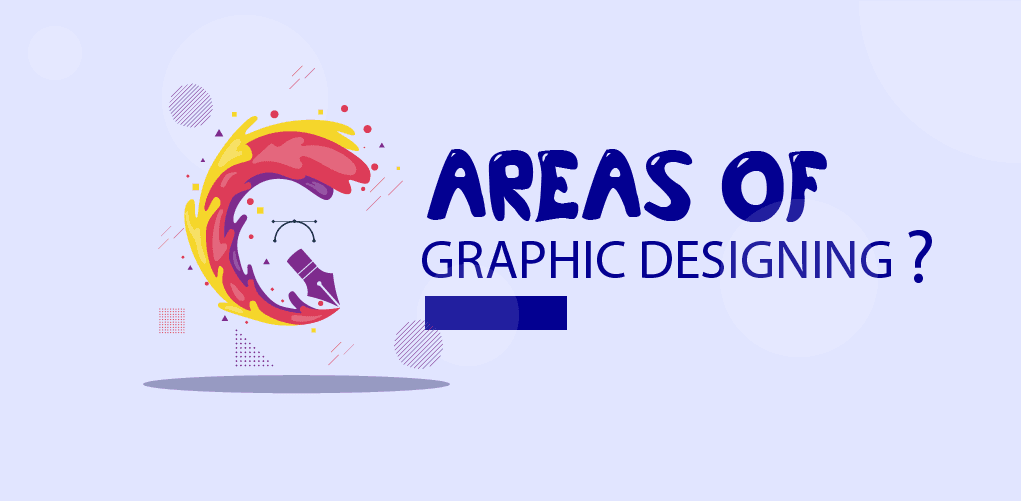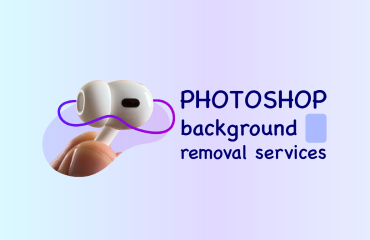
Design Career: Areas of Graphic Designing
Graphic design is a dynamic and ever-evolving field that blends creativity with technology to communicate ideas visually. As the digital landscape continues to grow, so does the demand for graphic designers across various industries. Whether you’re an aspiring designer or someone looking to switch careers, understanding the diverse areas within graphic design can help you carve out your niche and develop a successful, fulfilling career. In this article, we’ll explore the major areas of graphic design, what each entails, and the skills needed to thrive in each specialization. We’ll also examine how each area contributes to the broader design ecosystem, the industries they serve, and emerging trends you should be aware of.
1. Branding and Identity Design
Branding and identity design is at the heart of a company’s image. Designers in this area create the visual elements that represent a brand, such as logos, typography, color palettes, and overall visual style. These components form a brand’s identity and ensure consistency across all platforms.
A strong brand identity makes a company instantly recognizable and conveys its values and personality. Designers must research competitors, understand target demographics, and translate that knowledge into a visual system that stands the test of time.
Key Responsibilities:
- Designing logos and brand guidelines
- Creating business cards, letterheads, and packaging
- Developing cohesive visual identities across digital and print media
- Collaborating with brand strategists and marketing teams
Required Skills:
- Strong understanding of color theory and typography
- Proficiency in Adobe Illustrator and Photoshop
- Ability to communicate abstract brand values visually
- Knowledge of brand strategy and market trends
Career Opportunities:
- Brand Designer
- Visual Identity Specialist
- Art Director
- Corporate Branding Consultant
2. Web and User Interface (UI) Design
UI designers focus on the layout and interactive elements of websites, mobile apps, and software. Their goal is to create user-friendly designs that enhance user experience while maintaining aesthetic appeal.
This role requires staying updated on web trends, design systems, and evolving technologies. Designers must prioritize usability and accessibility to ensure inclusivity.
Key Responsibilities:
- Designing web pages, app screens, and navigation flows
- Collaborating with UX designers and developers
- Ensuring responsive and accessible design
- Building style guides and component libraries
Required Skills:
- Knowledge of web design principles
- Experience with tools like Figma, Sketch, and Adobe XD
- Understanding of HTML/CSS and JavaScript basics
- Familiarity with web accessibility standards (WCAG)
Career Opportunities:
- UI Designer
- Web Designer
- Product Designer
- Design System Specialist
3. User Experience (UX) Design
UX design centers on the user’s journey through a product or service. Designers conduct in-depth research to understand user behavior, frustrations, and goals, then build solutions that enhance usability and satisfaction.
The field is research-intensive and involves close collaboration with developers, product managers, and business stakeholders. Good UX design can significantly boost conversion rates, customer retention, and user satisfaction.
Key Responsibilities:
- Conducting user research and testing
- Creating wireframes and prototypes
- Mapping out user journeys and information architecture
- Performing usability audits and analytics reviews
Required Skills:
- Strong analytical and problem-solving skills
- Proficiency in UX tools like Axure, Balsamiq, and InVision
- Empathy and attention to detail
- Knowledge of human-computer interaction (HCI)
Career Opportunities:
- UX Designer
- UX Researcher
- Information Architect
- Interaction Designer
4. Motion Graphics and Animation
Motion design brings static visuals to life through animation, making content more engaging and dynamic. It’s widely used in advertising, social media, explainer videos, television, and even augmented reality (AR).
This area often intersects with storytelling and brand messaging, requiring designers to balance creativity with function and timing.
Key Responsibilities:
- Creating animated graphics for videos
- Designing visual effects and transitions
- Working with audio and video editing software
- Syncing visuals with music, voiceovers, and scripts
Required Skills:
- Proficiency in After Effects, Premiere Pro, and Cinema 4D
- Knowledge of timing, storytelling, and visual rhythm
- Creativity and technical proficiency
- Basic understanding of video formats and compression
Career Opportunities:
- Motion Graphics Designer
- Animator
- Video Editor
- Visual Effects (VFX) Artist
5. Print and Publication Design
Print and publication designers create layouts for tangible media. Their designs must be both aesthetically pleasing and functional, often requiring collaboration with editors, publishers, and print vendors.
Though digital media is dominant, print remains vital in certain sectors such as publishing, advertising, and corporate communication.
Key Responsibilities:
- Designing layouts for books, magazines, and brochures
- Ensuring print-ready file formats
- Collaborating with printers and publishers
- Managing pagination, grids, and content hierarchy
Required Skills:
- Proficiency in Adobe InDesign, Illustrator, and Photoshop
- Strong understanding of print production
- Eye for layout and typography
- Knowledge of paper types, inks, and finishing techniques
Career Opportunities:
- Print Designer
- Layout Artist
- Publication Designer
- Editorial Designer
6. Packaging Design
Packaging design blends marketing, engineering, and visual art. It must be eye-catching, informative, and compliant with industry regulations while protecting the product.
Designers often work with die-lines, materials, and prototypes to create engaging packages that align with brand messaging and consumer behavior.
Key Responsibilities:
- Designing product packaging and labels
- Considering functionality, aesthetics, and brand identity
- Creating dielines and prototypes
- Coordinating with production and logistics teams
Required Skills:
- Knowledge of packaging materials and production
- 3D modeling and prototyping skills
- Attention to detail and brand alignment
- Understanding of shelf impact and consumer psychology
Career Opportunities:
- Packaging Designer
- Industrial Designer
- Brand Packaging Consultant
- Structural Packaging Designer
7. Advertising and Marketing Design
Marketing designers create visuals that drive engagement, sales, and brand awareness. Their work spans print ads, digital banners, social media graphics, and email marketing.
They often work in fast-paced environments, requiring the ability to adapt, meet tight deadlines, and create high-impact designs quickly.
Key Responsibilities:
- Designing visual content for campaigns
- Collaborating with marketers and copywriters
- Ensuring brand consistency across platforms
- A/B testing visuals for performance
Required Skills:
- Quick turnaround and adaptability
- Mastery of design tools
- Understanding of consumer psychology
- Knowledge of digital marketing platforms
Career Opportunities:
- Marketing Designer
- Advertising Art Director
- Creative Director
- Content Marketing Designer
8. Environmental and Experiential Design
This niche involves creating immersive experiences in physical environments. Designers may work on exhibitions, branded spaces, signage systems, and events.
The role merges graphic design with architecture and interior design, aiming to enhance how users navigate and experience physical spaces.
Key Responsibilities:
- Designing physical graphics for events and spaces
- Creating wayfinding and signage systems
- Collaborating with architects and interior designers
- Managing large-scale print installations
Required Skills:
- Knowledge of spatial design principles
- 3D design and CAD software proficiency
- Project management and collaboration skills
- Awareness of ADA compliance and public safety standards
Career Opportunities:
- Environmental Graphic Designer
- Exhibit Designer
- Wayfinding Specialist
- Experiential Designer
9. Illustration and Digital Art
Illustrators create custom visuals that add a personal, often whimsical or stylistic touch to a project. Their work is seen in editorial layouts, brand mascots, children’s books, video games, and merchandise.
Illustrators often operate as freelancers, allowing creative freedom across multiple industries.
Key Responsibilities:
- Creating custom illustrations
- Working with creative briefs and storyboards
- Integrating artwork into broader designs
- Producing assets for animation or games
Required Skills:
- Drawing and painting skills
- Mastery of tools like Adobe Illustrator, Procreate, or CorelDRAW
- Creativity and stylistic versatility
- Ability to adapt to various design needs and formats
Career Opportunities:
- Illustrator
- Concept Artist
- Comic Book Artist
- Character Designer
10. Freelance and Multidisciplinary Design
Freelancers offer diverse services to multiple clients, often blending skills from various design domains. This path provides creative freedom but requires strong self-management and business acumen.
Freelancers must build a personal brand, maintain a portfolio, and stay current with design trends.
Key Responsibilities:
- Managing client relationships and projects
- Providing a range of design services
- Building a personal brand and portfolio
- Handling contracts, invoicing, and timelines
Required Skills:
- Time management and business acumen
- Flexibility and continuous learning
- Strong communication and networking skills
- Ability to work independently and market oneself
Career Opportunities:
- Freelance Graphic Designer
- Creative Consultant
- Studio Owner
- Digital Nomad Designer
Conclusion
The field of graphic design is vast, offering numerous paths for creative professionals. Whether you’re drawn to the structure of branding or the fluidity of animation, there’s a niche that fits your skills and interests. By understanding the different areas of graphic design, you can make informed decisions about your career, specialize in your passions, and continue to grow in an exciting, creative industry.
As design continues to evolve with technology, new opportunities will emerge in augmented reality, AI-driven interfaces, voice design, and beyond. With the right mindset, tools, and dedication, a career in graphic design can be both artistically fulfilling and financially rewarding.
Start exploring these areas today, and you might discover where your design journey truly begins.




Extremely helpful article to graphic designer, thanks a lot for such a great post indeed.